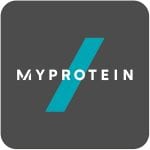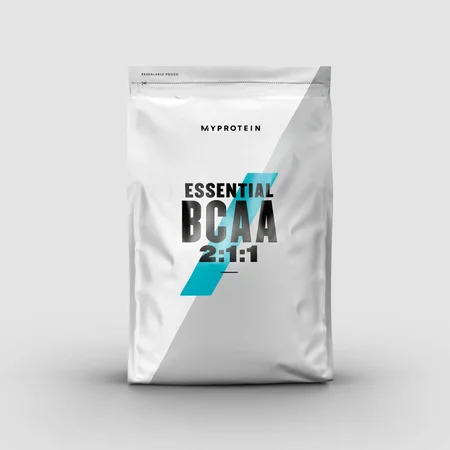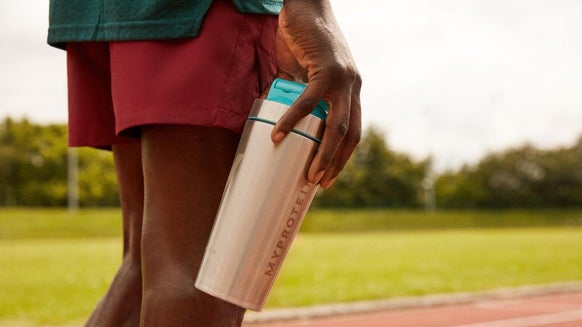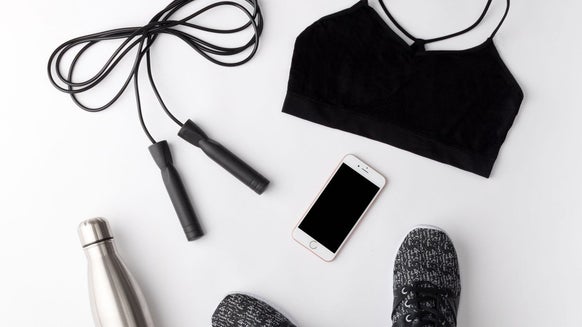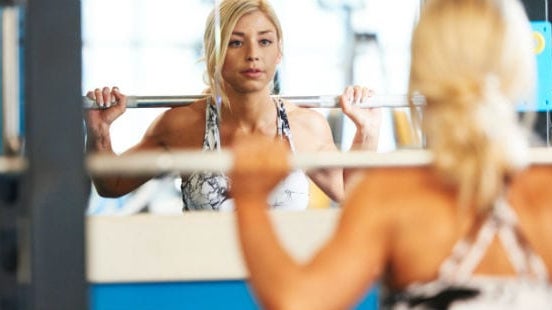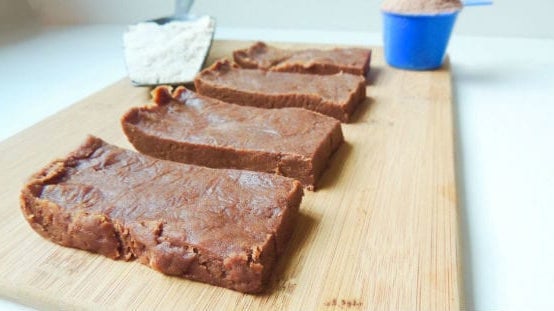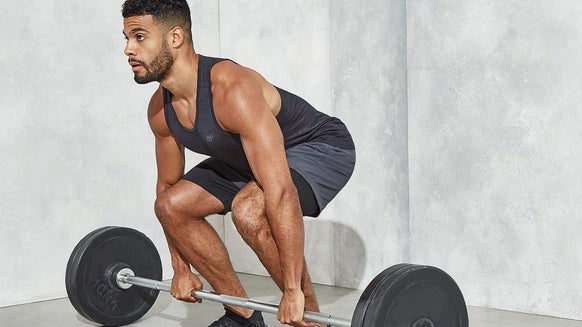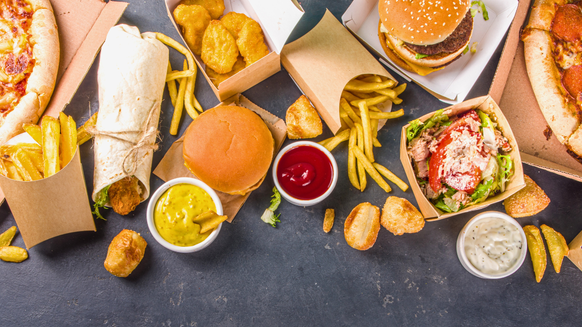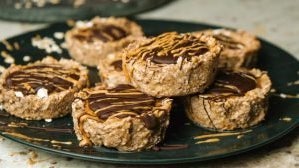
A thruster is simply a front squat leading to an overhead press. Sounds simple enough, right? Add some weight to the bar and repeat ten times and you start to get an idea of why they're so hard. They do come with many benefits, too, so read on to find out why they're so good for you, plus how to work out any common mistakes.
Benefits of Thrusters
The barbell thruster is a compound exercise, meaning it's multi-joint. You'll feel it in pretty much all your major leg muscles - so the quads, hammies and glutes. Your abs and back muscles work hard to keep you stable and upright during the exercise, and although it's your legs that drive most of the force, your shoulders and arms will get a workout too.
Using a low weight, high rep range for thrusters (depending on your fitness, this could be an empty Olympic bar) will work your cardiovascular system hard. Seriously, you'll be gassy after 10 reps. A higher weight with heavier reps will develop explosive power and muscular strength. This is not for beginners though, so make sure you have your technique fully nailed before loading up the bar.
Finally, thrusters can be done with pretty much any object for an at-home workout - use a sandbag, kettlebell, or gallon of water to squat and press overhead!
How To Do Thrusters
First up, you need to get the bar into front rack position. You have two options here: you can power clean it there, or you can squat clean it - the latter means you'll already be landed in the bottom part of your front squat, ready to start your first rep. Normally for front rack you'd have a minimal grip on the bar, but because you'll be pressing the bar overhead, it's important to have a press grip, ready for the overhead movement. Don't be surprised if this is difficult at first - keep working on joint mobility and it will become easier over time.
If you've chosen to power clean, lower yourself down into a front squat, ensuring you hit below parallel. Let your legs do the majority of the work - explode out of the bottom of the squat and use the momentum to get the barbell overhead - your arms will tire from pushing the barbell overhead quicker than your legs will. As you come towards the top of the squat, lower your elbows to prepare for the push press overhead. Keep your weight in your heels. Tipping forwards onto your toes will throw you off balance and you'll lose power when not driving through the heels.
Once the barbell is overhead, the coaching cue is "head through": this is to prevent leaning back during the overhead press, as many lifters tend to do. Keeping your core engaged will help this too, plus protect your lower back. You've now done one full rep.
Continue for the prescribed rep range or until you feel your form giving out - if you feel yourself tipping forward and becoming unstable, give yourself a break.
Common Thruster Mistakes
The most common mistake made in thrusters is to let the elbows drop from front rack position. This in turn makes the entire upper body tilt forward, shifting center of balance, and meaning the bar doesn't just travel vertically - it'll travel out, too, meaning you use more energy moving through planes. Keep your elbows as high up as your mobility allows to keep the movement smooth and on the vertical plane.
Another issue is turning the thruster into two movements: a front squat, then a shoulder press. The lift should be a smooth movement from the bottom of the squat to overhead, as it's this momentum that prevent fatigue and ensure you can carry on for the prescribed reps. Before loading up, try the thruster with an empty bar or even a PVC pipe to ensure there's no pause between the squat and overhead movement.
Take-Home Message
Done properly, the barbell thruster is an amazing full-body movement that will improve strength, endurance, and your cardiovascular system. Beginners - stick at a lower weight to improve technique whilst working on mobility.
Keep your core engaged, elbows up, and movement smooth, and soon you'll be completing the prescribed reps no problem.
